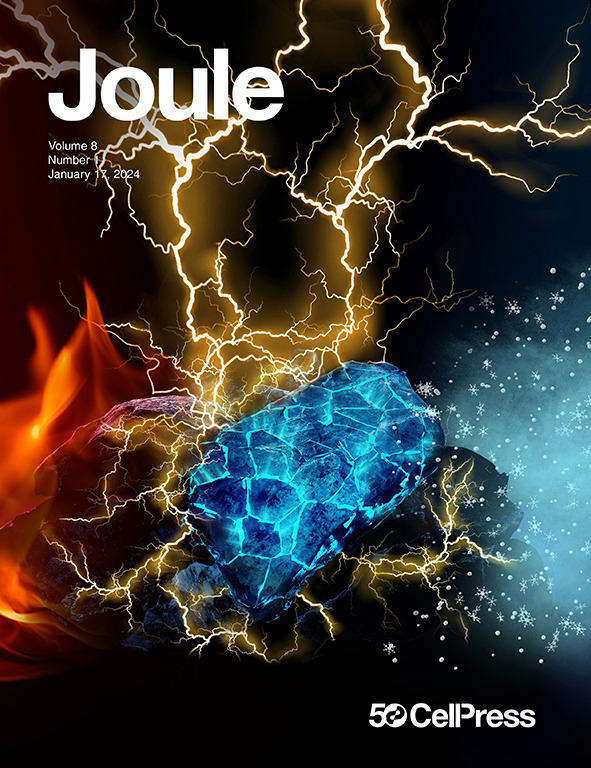增材工程使高电压LiCoO2锂离子电池成为可能
IF 38.6
1区 材料科学
Q1 CHEMISTRY, PHYSICAL
引用次数: 0
摘要
高压LiCoO2 (LCO)基锂离子电池(LIBs)增材工程的进展受到缺乏有效指导原则的限制。在这里,我们报告了一种用于设计腈添加剂的晶格耦合机制,系统地评估了20种候选添加剂,以量化它们对LCO性能的增强效果。这一机制的关键是两个基序描述符:O 2p带中心能和O 2p带中心与Co 3d带中心之间的能隙(ΔE),它们显著提高了LCO阴极的结构和界面稳定性。在此原理的指导下,我们开发了1,2,2,3-丙基四碳腈(PCN)作为代表性添加剂,在4.55 V 1.0 Ah的人工石墨(AG)||LCO袋状电池中,分别在25°C和45°C下循环770和380次后,容量保持率达到80%。这项工作为高压LCO阴极添加剂化学的探索和评价提供了新的见解。本文章由计算机程序翻译,如有差异,请以英文原文为准。


Additive engineering enables aggressive high-voltage LiCoO2 lithium-ion batteries
The advancement of additive engineering in high-voltage LiCoO2 (LCO)-based lithium-ion batteries (LIBs) is limited by the lack of effective guiding principles. Here, we report a lattice coupling mechanism for designing nitrile additives, systematically evaluating 20 candidates to quantify their enhancement effects on LCO performance. Key to this mechanism are two motif descriptors: the O 2p band center energy and the energy gap (ΔE) between the O 2p band center and the Co 3d band center, which significantly improve the structural and interfacial stability of the LCO cathode. Guided by this principle, we developed 1,2,2,3-propanetetracarbonitrile (PCN) as a representative additive, achieving 80% capacity retention in 4.55 V 1.0 Ah artificial graphite (AG)||LCO pouch cells after over 770 and 380 cycles at 25°C and 45°C, respectively. This work provides new insights into the exploration and evaluation of additive chemistry for high-voltage LCO cathode.
求助全文
通过发布文献求助,成功后即可免费获取论文全文。
去求助
来源期刊

Joule
Energy-General Energy
CiteScore
53.10
自引率
2.00%
发文量
198
期刊介绍:
Joule is a sister journal to Cell that focuses on research, analysis, and ideas related to sustainable energy. It aims to address the global challenge of the need for more sustainable energy solutions. Joule is a forward-looking journal that bridges disciplines and scales of energy research. It connects researchers and analysts working on scientific, technical, economic, policy, and social challenges related to sustainable energy. The journal covers a wide range of energy research, from fundamental laboratory studies on energy conversion and storage to global-level analysis. Joule aims to highlight and amplify the implications, challenges, and opportunities of novel energy research for different groups in the field.
 求助内容:
求助内容: 应助结果提醒方式:
应助结果提醒方式:


